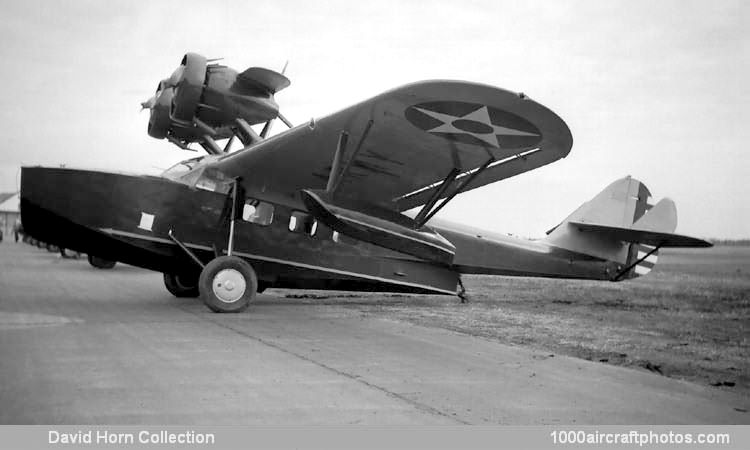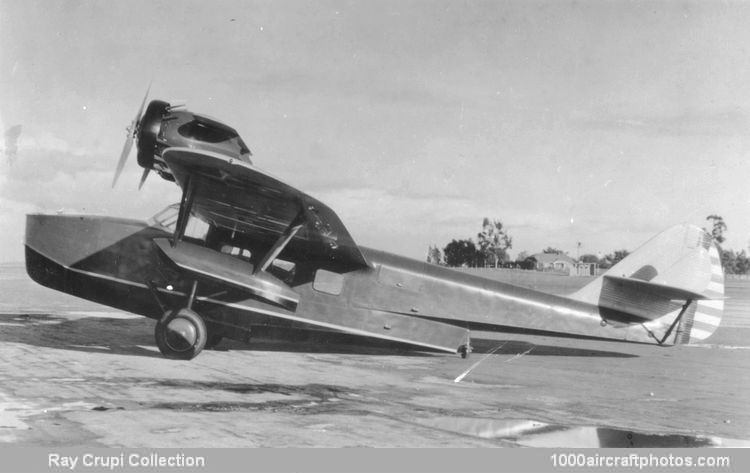04/30/2010. Remarks by Johan Visschedijk: "In July 1930 Donald Douglas, for whom the sea always retained its fascination, combined his vocation and his avocation by building the first flying boat of his own design, the Sinbad. Prototype of the Dolphin series, the twin-engined Sinbad was conceived in the economic boom of the late 1920s as a luxury 'air yacht'. Unfortunately, in the civil market, the aircraft was a victim of the Great Depression and Douglas was saved from incurring a telling financial blow only through the fortuitous success of the military versions of the Dolphin.
The Sinbad (c/n 703, NX145W) was a high-wing cantilever monoplane of wood and metal construction, with all-metal hull and wood-covered cantilever wing. Two pilots sat in an enclosed cabin, located just forward of the wing, and for eight passengers in a cabin within the hull and beneath the wing. A pair of 300 hp Wright J-5C Whirlwind radials were mounted above and forward of the wing on multiple struts (initially faired over to reduce drag), and of tube-braced tail planes.
While the Sinbad was being tested, Douglas was planning the production of the Dolphin, an amphibian version based on the modified Sinbad, fitted with retractable landing gear, and intended for military and civil markets. While only 58 Dolphins were built between 1931 and 1934, this total included not less than 17 variants and models as the Dolphins were either custom-built for each civil customer or produced in small batches for military customers. Furthermore, progressive improvements, modifications and/or engine changes were introduced on the line.

